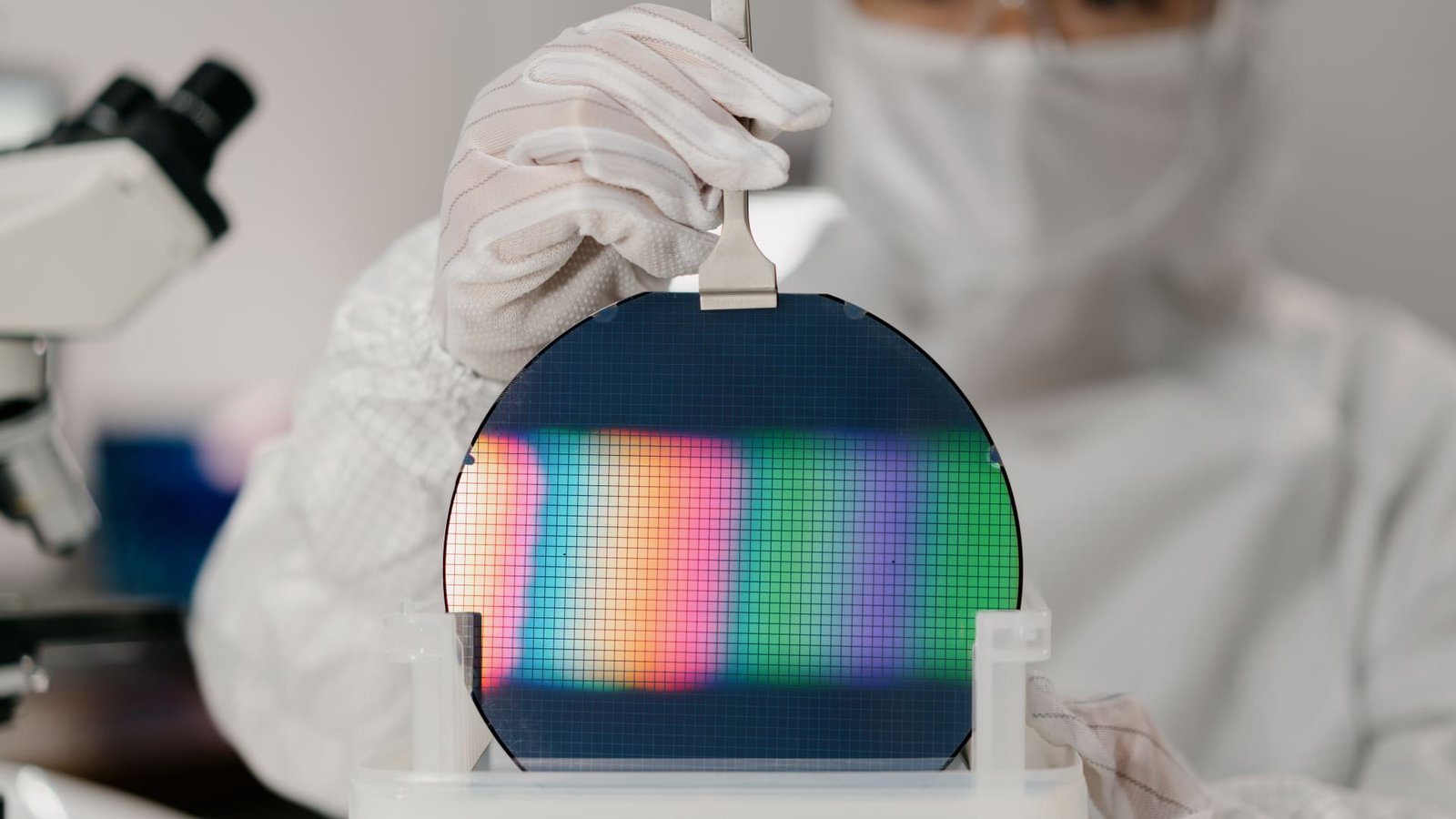Chip engineer handling a wafer. Compared to Nvidia’s export-restricted chips, the performance gap between Huawei and the H20 is less than a full generation,” said Dylan Patel, founder, CEO and chief analyst of SemiAnalysis.
Sinology | Moment | Getty Images
With the U.S. restricting China from buying advanced semiconductors used in artificial intelligence development, Beijing is placing hopes on domestic alternatives such as Huawei.
The task has been made more challenging by the fact that U.S. curbs not only inhibit China’s access to the world’s most advanced chips, but also restrict availing technology vital for creating an AI chip ecosystem.
Those constraints span the entire semiconductor value chain, ranging from design and manufacturing equipment used to produce AI chips to supporting elements such as memory chips.
Beijing has mobilized tens of billions of dollars to try to fill those gaps, but while it has been able to “brute force” its way into some breakthroughs, it still has a long way to go, according to experts.
“U.S. export controls on advanced Nvidia AI chips have incentivized China’s industry to develop alternatives, while also making it more difficult for domestic firms to do so,” said Paul Triolo, partner and senior vice president for China at advisory firm DGA-Albright Stonebridge Group.
Here’s how China stacks up against the rest of the world in four key segments needed to build AI chips.
additional curbs had prevented it from selling its H20 processor to Chinese clients.
Nvidia’s H20 was a less sophisticated version of its H100 processor, designed specifically to skirt previous export controls. Nevertheless, experts say, it was still more advanced than anything available domestically. But China hopes to change that.
In response to restrictions, more Chinese semiconductor players have been entering the AI processor arena. They’ve included a wide array of upstarts, such as Enflame Technology and Biren Technology, seeking to soak up billions of dollars in GPU demand left by Nvidia.
But no Chinese firm appears closer to providing a true alternative to Nvidia than Huawei’s chip design arm, HiSilicon.
Huawei’s most advanced GPU in mass production is its Ascend 910B. The next-generation Ascend 910C was reportedly expected to begin mass shipments as early as May, though no updates have emerged.
Dylan Patel, founder, CEO and chief analyst at SemiAnalysis, told CNBC that while the Ascend chips remain behind Nvidia, they show that Huawei has been making significant progress.
“Compared to Nvidia’s export-restricted chips, the performance gap between Huawei and the H20 is less than a full generation. Huawei is not far behind the products Nvidia is permitted to sell into China,” Patel said.
He added that the 910B was two years behind Nvidia as of last year, while the Ascend 910C is only a year behind.
But while that suggests China’s GPU design capabilities have made great strides, design is just one aspect that stands in the way of creating a competitive AI chip ecosystem.
7-nanometer chips, requiring less advance tech than TSMC’s 3-nanometer production. Smaller nanometer sizes lead to greater chip processing power and efficiency.
There are signs that SMIC has made progress. The company is suspected to have been behind a 5-nanometer 5G chip for Huawei’s Mate 60 Pro, which had rocked confidence in U.S. chip controls in 2023. The company, however, has a long way to go before it can mass-produce advanced GPUs in a cost-efficient manner.
According to independent chip and technology analyst Ray Wang, SMIC’s known operation capacity is dwarfed by TSMC’s.
“Huawei is a very good chip design company, but they are still without good domestic chipmakers,” Wang said, noting that Huawei is reportedly working on its own fabrication capabilities.
But the lack of key manufacturing equipment stands in the way of both companies.



